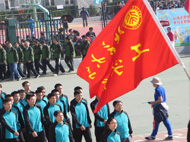讲座信息
9月8日生物医学工程系——Collagen Microsphere Based Protein Delivery & Effects of Compression Loading on Mesenchymal Stem Cell Alignment
讲座题目:报告一:Collagen Microsphere Based Protein Delivery
报告二:Effects of Compression Loading on Mesenchymal Stem Cell Alignment
报告人:Barbara P. Chan
时 间:9月8日(周三)下午3:00
地 点:廖凯原楼2-102会议室
主持人:葛子钢(特聘研究员)
报告内容摘要:
报告一内容摘要:Two platform technologies related to protein delivery will be discussed. Firstly, a modified emulsification method has been used to fabricate collagen microspheres for protein delivery. However, the reconstituted collagen meshwork is too open to exert significant control over the protein release. A photochemical crosslinking technology has been used as a secondary retention mechanism for proteins such as nerve growth factor (NGF). Secondly, a novel collagen microencapsulation technology has been developed to entrap human embryonic kidney 293 (HEK293) cells, which are stably transfected to overexpress glial-cell line-derived neurotrophic factor (GDNF), in collagen microspheres. This system acts as a physiological proliferation control 3D culture where cells proliferate slowly but secrete proteins rapidly with > 65 fold in GDNF productivity. Nevertheless, the collagen meshwork allows cell penetration, which makes in vivo application unfavorable. Therefore, alginate collagen composite systems have been developed to prevent cell penetration yet facilitate protein production and secretion. Using different fabrication methods and varying the percentage of alginate in the composites, the productivity and pattern of release of GDNF can be controlled.
报告二内容摘要:Cell alignment is an important design parameter in tissue engineering. Using a micromanipulator-based loading device, we delivered compression loading to human bone marrow derived mesenchymal stem cells (MSCs) in collagen constructs and demonstrated that hMSCs preferably aligned along the compression loading axis. Moreover, the matrix factor, particularly the collagen concentration, interferes with the mechanoresponse of hMSCs. Specifically, the compression-induced hMSCs alignment and elongation is collagen concentration-dependent, with moderate collagen concentrations giving the optimal responses. These mechanoresponses correlate well with the expression of integrin beta 1, suggesting the important link between cell-matrix association and mechanosensing. The importance of functional integrin-collagen binding in mediating the mechanoresponses of hMSC has been further demonstrated by complete abortion of such responses upon antibody neutralization.










